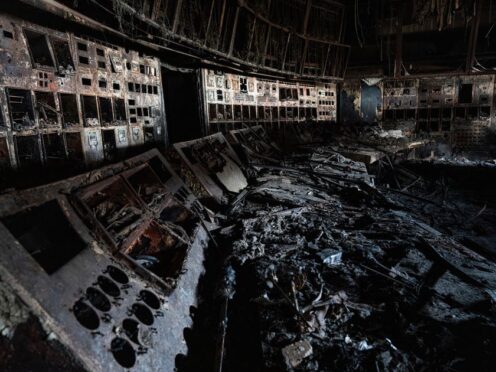
Ukrainian officials said on Friday they had used a barrage of drones to destroy at least six military aircraft and badly damage eight others at an airfield in Russia’s Rostov region.
Russian defence officials, however, claimed they intercepted 44 Ukrainian drones and that only a power substation was damaged in the attack.
The assault appeared to be one of Kyiv’s biggest air attacks in the war, coming as its forces stepped up their assaults on Russian soil.
Russia has also escalated attacks on civilian infrastructure, including Ukraine’s power plants, in recent weeks, signalling a new and potentially dangerous phase in the conflict as both sides struggle to achieve significant advances on the ground.
Special attention is now to Kharkiv and the consequences of Russian strikes on the city. Today, unfortunately, four people were killed, including three rescuers from our State Emergency Service of Ukraine because of a "Shahed" strike on an ordinary residential area. They arrived… pic.twitter.com/ZrLAwb3kcq
— Volodymyr Zelenskyy / Володимир Зеленський (@ZelenskyyUa) April 4, 2024
The overnight attack targeted a military airfield near Morozovsk in Russia and was conducted by Ukraine’s Security Service in co-operation with the army, Ukrainian intelligence officials told the AP.
They said about 20 members of the airfield’s personnel were killed or injured.
Morozovsk airfield was used by Russian bombers that have been launching guided aerial bombs at Ukraine’s cities and frontline positions, the officials said.
If true, the attack would be among Ukraine’s most successful cross-border strikes.
Last October, Ukraine claimed it destroyed nine Russian helicopters at two airfields in Russian-occupied regions using long-range ballistic missiles donated by the United States.

Last August, Ukrainian media, citing unidentified intelligence sources, claimed that drone attacks hit parked Russian bomber aircraft at air bases deep inside Russia.
In a conflicting version of events, Russia’s defence ministry said a total of 44 drones were “intercepted and destroyed” in the Morozovsky district, more than 60 miles from the border.
The attack damaged a power substation, Rostov governor Vasily Golubev said, adding that eight people near the airfield were injured.
Usually well-informed Russian military bloggers confirmed an attempted attack by Ukrainian drones on a military air base in Morozovsk but said there were no casualties at the base and no damage to warplanes.
The Russian defence ministry said nine more drones were intercepted over the border regions of Kursk, Belgorod, Krasnodar and the nearby Saratov region, bringing the total of attack drones deployed by Ukraine overnight to 53.
Drone warfare is a key feature of the war, which has extended into a third year since Russia’s full-scale invasion of its neighbour.
On the 600-mile front line, where fighting is largely bogged down, low-cost drones are used by both sides to knock out expensive military hardware.

The Kremlin’s forces have used large numbers of Iranian-designed Shahed drones to bombard urban areas of Ukraine.
Kyiv, in turn, has developed a small but fast-growing defence industry where drones, including deadly unmanned sea vessels, are proving effective.
Russian authorities have long accused Ukraine of launching regular drone attacks on power plants, oil refineries and other targets in western regions of Russia near the border.
Last month, Ukraine fired a barrage of 35 drones at such targets, Russia said. Some attacks have reached deep into Russia, including Moscow and as far as 745 miles east of Ukraine.
Ukraine cannot match the scale of Russia’s military, however. Last week, Moscow launched a mass barrage of 99 drones and missiles against Ukraine’s energy infrastructure, hitting regions across the country.
Meanwhile, Ukraine’s air force said it intercepted 13 Russian drones launched overnight at the southern regions of Odesa, Zaporizhzhia and Dnipropetrovsk, but five missiles got through. Authorities did not report any casualties.
Ukrainian President Volodymyr Zelensky said he held a meeting with his top brass focused on the production of attack drones and the manufacture of electronic warfare equipment to intercept incoming drones.
He said late Thursday that the meeting put together “clear written agreements with manufacturers, clear financing and clear delivery deadlines”.
Authorities will next turn to “robust and increasing” missile production, he said, as military support from western partners falls short of what Kyiv hoped for.
Mr Zelensky said an assessment of frontline positions found that Ukraine has “managed to stabilise our positions” despite being outgunned and outnumbered by the Russian army.

Enjoy the convenience of having The Sunday Post delivered as a digital ePaper straight to your smartphone, tablet or computer.
Subscribe for only £5.49 a month and enjoy all the benefits of the printed paper as a digital replica.
Subscribe